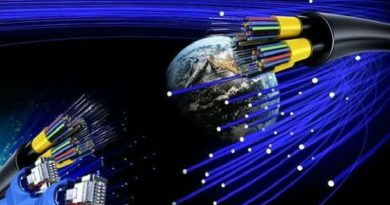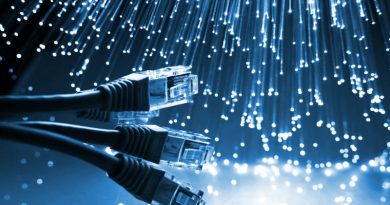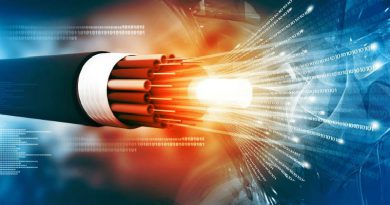All you need to know about Optic Fiber Internet
Fiber optic internet connections are by far the fastest and most reliable type of internet connection out there in the market for you to choose, but it can be quite an ordeal getting those precious beams of internet light into your device. If you consider yourself just born into the world of fiber-optic internet-or those who are still considering it- here’s all you need and should know.
How does fiber-optic internet work?
Fiber already has become a vital part of everyone’s internet experience, Huge fiber-optic cables have become the backbone of our colossal internet. Fiber-optic cables are made of thin fibers of glass or plastic which transmit the information over long distances as pulses of light.
Fiber-optic can carry much more data compared to metal wire, they are less likely to lose data, and they have strong immunity against electromagnetic interference (as you might get from solar storms). Fiber-optic cables travel through continents and oceans-whether they’re at the bottom of the sea or just beneath your feet, they do not fail to do their job reliably.
Tubes full of light
In fiber optics, information is transmitted as pulses of light.
The inside of a fiber-optic tube acts as a mirror, bouncing the light off of the inside walls and down the tube, toward its destination. You can move lots of data when information is moving literally at the speed of light.
Fiber-optic cables have lots of different types- some are more durable than others, some travel longer distances-but all of them are good at transferring data quickly and with reliability.
At some point, all internet traffic has to come over to fiber-optic, but you’d want your fiber to reach all the way to your home. Fiber to the home is not only Provides you with the fastest most reliable connection currently available but also saves lots of money for internet service providers (ISPs) in the long run with little maintenances and fewer customer complaints. fiber internet plans are often the same price or cheaper than other types of connections in the same area.
Why fiber should be your first choice
If you are thinking about a reason why you should care about fiber and how it became the first choice of the customer. Being the cool, cutting-edge technology for accessing the internet, there are a lot of other benefits that fiber offers that no other technologies even come close to.
The most eye-catching advantages that fiber provides are high download speeds, symmetrical upload speeds, reliability, and scalability.
High download speeds
Since entire continents with billions of internet users are connected by a fiber-optic wire,
It should not come as a surprise that it’s the fastest choice for connecting your home and every one of your devices. The most fibers plan nowadays generally offer 1Gbps (1,000 Mbps) speeds, which is most people can use-even if most of their friends are also using the same Wi-Fi.
There are other internet plans which can also reach 1 Gbps, Only with this one fact, they can’t be considered equals. Cable speeds will continually increase as the technology advances to its physical limits. Meanwhile, fiber isn’t even breaking a sweat yet. With the increase of home internet speed, the gap between cable and fiber will only be going to get wider.
Symmetrical upload speeds
Cable download speeds are nearly equal to fiber, but uploading to a cable link only exceeds a fraction of those speeds. In comparison, Fiber has symmetrical upload and download rates. This means you can upload at 1 Gbps as well as you can stream it at 1 Gbps.
Most online activities such as streaming video, reading the news, or just web surfing, needs very little upload, so downloading speed is a crucial factor. However, as more people start using the internet for live streaming and video conferencing, upload speed becomes more important. No technology comes close when it comes to uploading speed.
Reliability
Not only does a fiber network have the fastest advertised rates; they also hold those rates more consistently than other networks. Many internet forms are vulnerable to any form of intrusion. Here are only a few examples:
- Cable internet is slower because the area has more Internet traffic.
- The farther you go from the central office of the company the DSL internet slows down.
- Satellite internet can be disrupted by the weather.
Fiber is not suffering from any of those issues. Also, it does not need as much maintenance as other internet forms. That means you don’t have to deal with cable or DSL outages from old cables being replaced about as much as you might.
Scalability
Fiber is the best internet you can get right now, but when you look to the future, it’s also the best choice. Since fiber is transmitting its data using light rather than electricity, it uses far higher frequencies and loses less energy over long distances. This ensures that fiber can bring much more information through metal cables than is physically possible.
Also sometimes fiber-optic cables are installed with what is known as “dark fiber.” Dark fiber is extra fibers in the cable that are not used initially. As the amount of internet traffic in an area increases, dark fibers can be switched on simply to provide additional capacity, rather than digging up the cables and laying larger ones.




